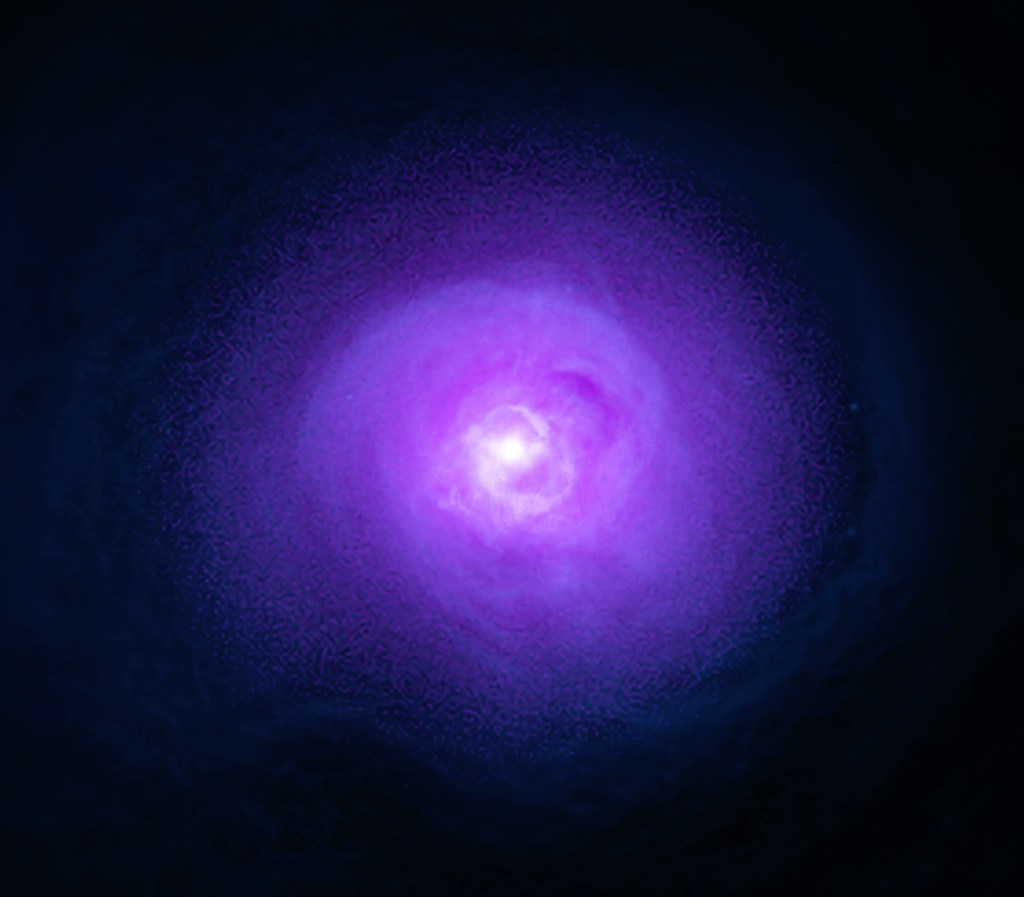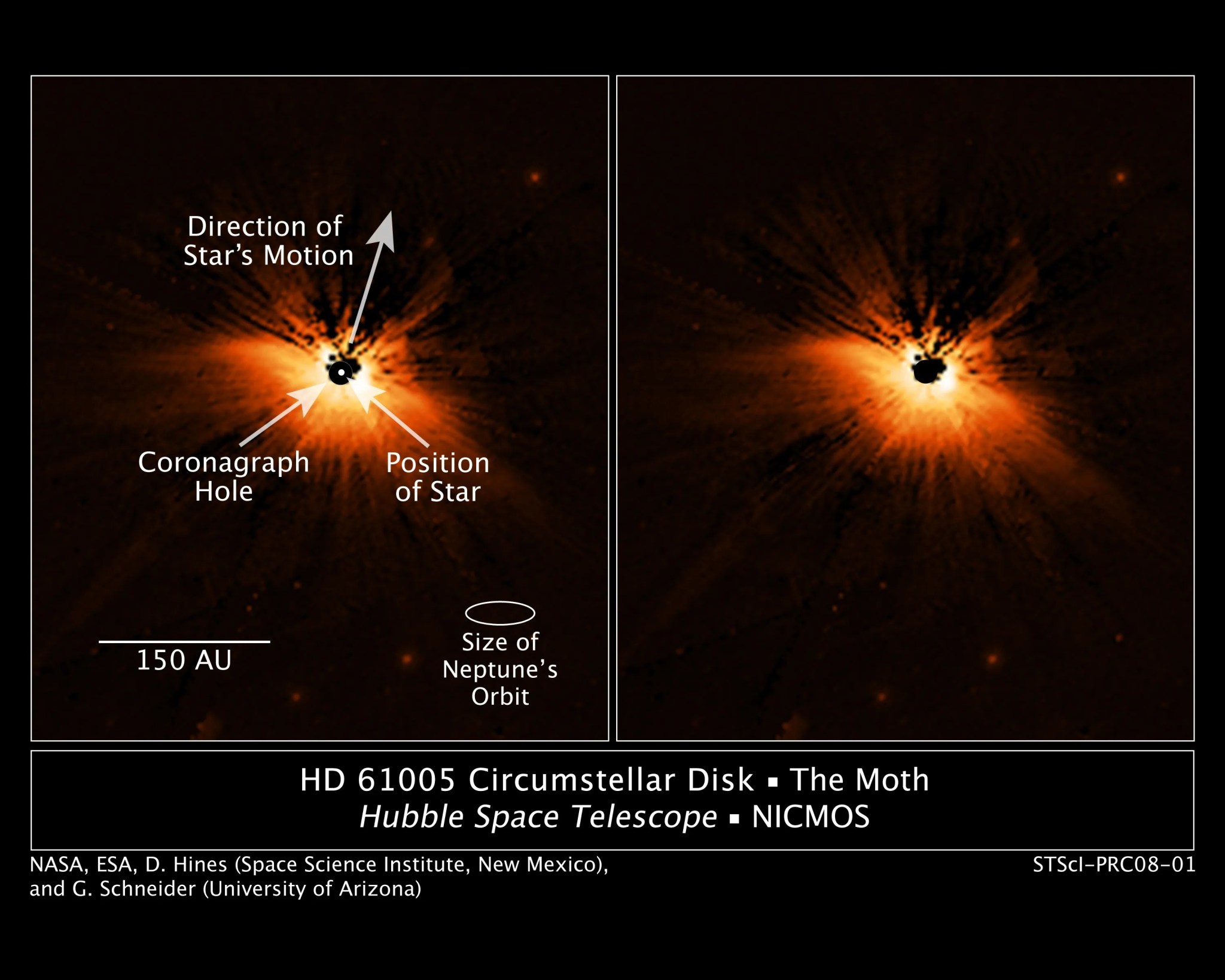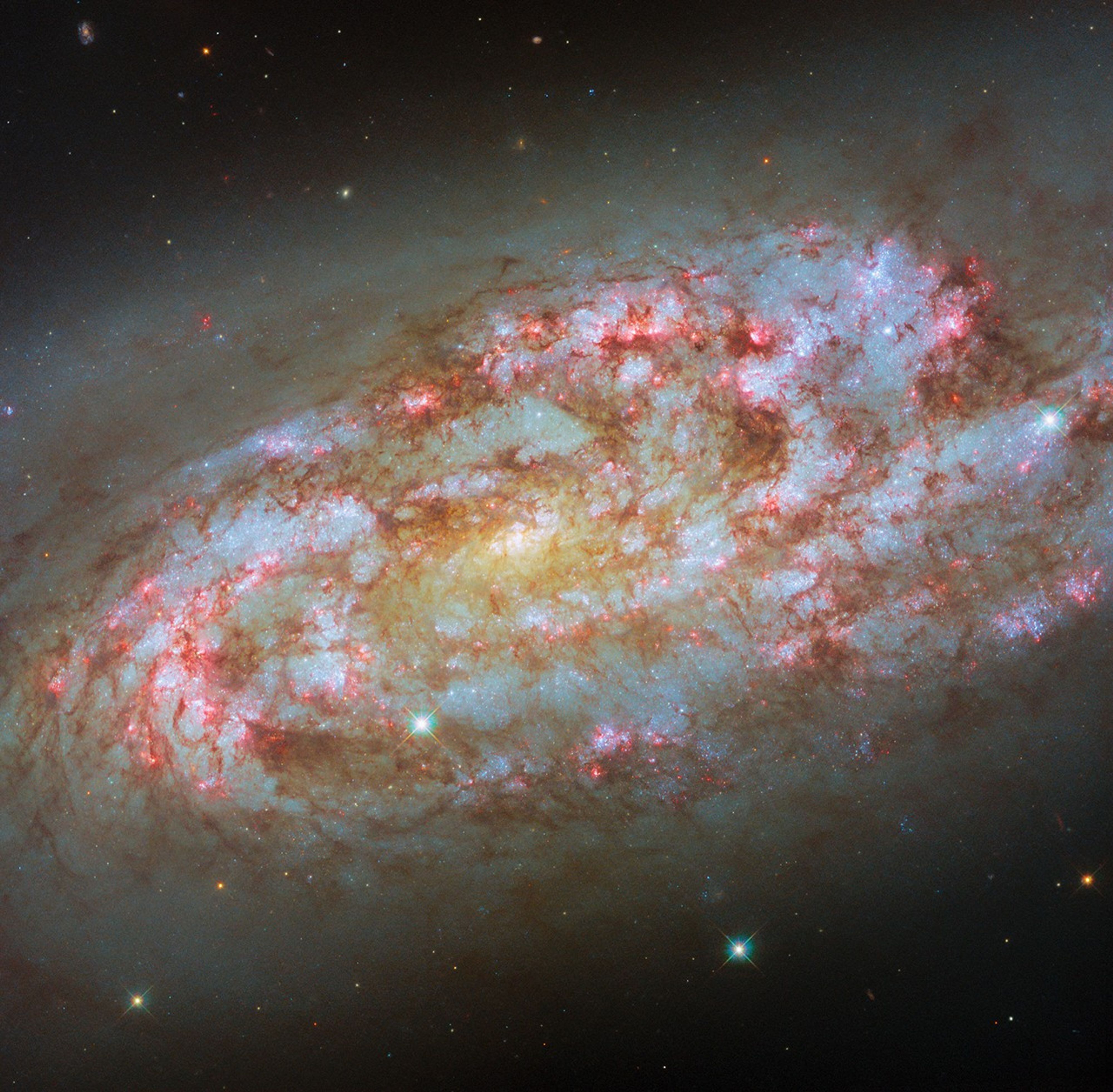Credit:
NASA, D. Hines (Space Science Institute, Corrales, New Mexico), and G. Schneider (University of Arizona)
What superficially resembles a giant moth floating in space is giving astronomers new insight into the formation and evolution of planetary systems. This is not your typical flying insect. It has a wingspan of about 22 billion miles. The wing-like structure is actually a dust disk encircling the nearby, young star HD 61005, dubbed "The Moth." Its shape is produced by starlight scattering off dust.
Dust disks around roughly 100-million-year-old stars like HD 61005 are typically flat, pancake-shaped structures where planets can form. But images taken with NASA's Hubble Space Telescope of "The Moth" are showing that some disks sport surprising shapes.
The Hubble image was taken with the Near-Infrared Camera and Multi-Object Spectrometer (NICMOS). The black disk in the center of the image is a coronagraphic hole in the NICMOS camera that blocks out most of the central star's light so that astronomers can see details in the surrounding dust disk.
Related link:
Donna Weaver
Space Telescope Science Institute






























